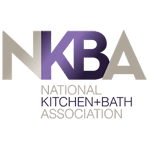Every manager has their own way of giving feedback. Some lean on one on one interactions, while others look to de-personalize performance critiques. Feedback can be verbal or written, carefully prepared or delivered off the cuff. There’s the “3×3 method,” the “Sandwich Approach,” and the “Wrap Method.” But what do they all mean? How do you settle on a feedback strategy that works for you and your organization?
After nearly three decades running companies and managing people, I’ve learned to ask the following five questions before dishing out feedback:
- Is this feedback important?
- Is it actionable?
- Is it consistent?
- Will it build trust?
- Will it help the colleague and company flourish?
1. Is this feedback important?
Most things that bother us at work just aren’t that important — and most feedback meant to address small issues is counterproductive. My litmus test is to measure the total impact of the perceived issue on the team and our clients. If the impact is minimal, then I refocus.
2. Is it actionable?
Share feedback that provides a clear path of action toward improvement. Feedback with no path of action wastes everyone’s time.
3. Is it consistent?
Regular feedback and communication makes it easier to address difficult situations immediately instead of waiting for an annual review and dredging up the past.
4. Will it build trust?
Feedback should always be given in the service of the larger vision of a company’s culture and performance. Research shows that high performing teams are comprised of employees who trust each other and trust the leadership team.
5. Will it help the colleague and company flourish?
I always want to provide information and support to employees that will motivate them to give their all while building their confidence. If the feedback is destructive or negative, it will not serve this goal.
How To: Feedback Like A Pro
If you’ve taken my five questions into consideration and decide that feedback is warranted, the question becomes what’s the best way to deliver that feedback? There are some excellent ideas for offering feedback, and there are some awkward strategies that are more trouble than they’re worth. Here’s an overview of notable feedback strategies, starting with the worst and working my way to some quality ideas. Stick with me until the end, because that’s where I get to the good stuff.
Types of Feedback:
- The Shit Sandwich
- 360 Feedback
- Total Transparency
- Self Review
- BIG Recognition
1. The Shit Sandwich
A shit sandwich is when a manager goes out of their way to avoid being confrontational with negative feedback by tucking it between some gratuitous pleasantries. In short, say something nice, deliver the negative stuff, and then end on a high note.
This is what I like to refer to as “polite torture.”
Example: “You’re such a pleasure to work with. That said, you’re often late to meetings and you missed the deadline on an important project. Even so, your coworkers adore you!”
This is an attempt at mind control! (And not a particularly good one, either.) This approach is ideal for control freaks looking to breed paranoia in their employees. Telling someone you care before delivering a harsh criticism strikes me as similar to being in an abusive relationship. The team member leaves the conversation bewildered, feeling awful, with no sense of where they stand and without any action items for future improvement.
Do you love them? Do you hate them? Are they fired?
2. 360 Feedback
If you’ve ever worked for a big company, you’ve probably been a victim of 360 Feedback. This is where employees anonymously submit commentary about what it’s like to work with you. Passive aggressive and destructive, I imagine it’s a lot like working at the Kremlin: Everyone reports on their neighbors and while hoping no one mentions their name. Companies that use 360 feedback grade or measure employees on a range of abstract competencies, after asking employees to grade themselves.
Example: Rate your business acumen on a scale of 1-10, now all of your co-workers and your manager are going to rate your business acumen.
People are by their nature unique and different, and self-rating systems on abstract qualities are more or less arbitrary. Some people will always overestimate their performance and contributions, others will always underestimate.
How does this system help employees thrive? No one knows.
3. Total Transparency
When things go wrong, total transparency can be used as a mutual learning opportunity to figure out where things went wrong and how to prevent the same things from happening in the future.
Example: “Let’s get together and discuss what went well, what didn’t go so well and how we can run a smoother operation next time around.”
A manager — or really anyone — can use this feedback process to manage a direct or lateral team. These are often called post-mortem or after-event reviews. This is less a critique of an individual person and more an opportunity for everyone to identify what went well, what didn’t and how to address it through future improvements.
By giving everyone in the conversation equal footing, it becomes a practical and actionable analysis rather than a personal critique of an individual and their performance. Total transparency is a great way to review a project or event that involves many contributors, and to allow everyone to air their issues and successes without harboring bad feelings over time.
Some company cultures have taken this to an extreme — with Bridgewater Associates and Netflix practicing what they call “radical transparency” that includes regular, harsh feedback from anyone who feels like destroying you on a given day.
I’ve never even considered this. An excuse to excoriate coworkers may seem cathartic on the outside, but the truth is that no one feels good at the end. Negativity begets negativity and can destroy trust.
Being honest shouldn’t be used as an excuse for being cruel. Ever.
4. Self Review
Self review is the most woke — it gives individual employees the best opportunity to develop their own critical processes and identify opportunities for improvement. See this post on the 75/25 rule for more on why negative self-reporting is just as important as the positive.
Just like 25 percent of news should be critical or “bad” news, 25 percent of self evaluation should be targeted to looking at how to make things better.
Example: “How do you think it went? Send me a list of 5 things you think went well along with some areas for improvement.”
If an employee asks for input during this process, then they are opening the door to provide feedback. If they don’t ask for input you can offer suggestions while letting them control the final work product and process.
If you can give people space to reflect on and evaluate their own work as a part of their work product, it allows them to subsequently identify their own weaknesses and eliminates the friction of having to deliver complicated, negative feedback.
Most people have some self awareness around their errors and those who don’t, there’s not really much you can do to help them
The four approaches outlined so far range from shameful (who wants to eat a shit sandwich?) to useful in specific situations. So where does that leave managers when it is essential and helpful to deliver 1:1 feedback to an employee? The answer is that a manager will almost never find themselves in the situation if they practice BIG feedback on a regular basis
5. B.I.G. Recognition
A system created by Laura Delizonna, PhD, a Stanford University instructor, international speaker, and author, “B.I.G.” stands for Behavior, Impact, and Greater Character Trait. First you identify a behavior, then illustrate the impact of that behavior with a specific example. Finally, it is important to articulate how the behavior and impact illustrate a broader character trait. This type of feedback depends on a culture and environment where people feel like managers and co-workers have their best interests at heart.
Example: “I know it was a challenging week. You stuck with it even when things were difficult and kept your cool. You were honest about the situation and not only showed integrity, but that you can stay level headed in a crisis.”
When you give BIG feedback, you make a practice of recognizing the positive contributions and displays of character in employees and co-workers with thoughtful and meaningful appreciation. Most of your feedback is positive and it happens with regularity. Because of this, when you do need to deliver difficult feedback, you have created a context of what Delizonna calls “psychological safety” — the belief that making mistakes is an accepted part of doing business, and that you won’t be punished or lose face. Employees working in a B.I.G. Recognition culture don’t feel fearful or threatened. Instead, they feel appreciated and empowered to improve their own performance.
B.I.G. Recognition is the best approach to creating a culture of respect where the ultimate goal is to encourage learning and productivity.
No One Wants Your Shit Sandwich
If you want to create a culture of fear and anxiety, that’s exactly what you’ll do. In a startup environment where people work together across teams, recognizing individuals for their stand-out contributions on a regular basis and setting the stage for honest dialogue is the best way to keep and cultivate great talent and strong teams. Just because you came of age during the era of the Shit Sandwich doesn’t mean that you need to perpetuate it.











